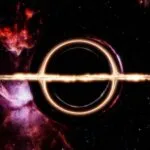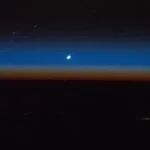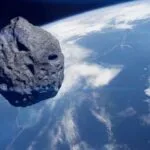New research challenges our understanding of galactic cores, suggesting they might not consist of what we previously thought. Instead, these centers could house colossal, invisible stars formed from mysterious “fuzzy” matter, reshaping our view of the universe’s inner workings.
Headlines
New Research Hints at an Invisible, ‘Fuzzy’ Mystery Lurking at the Heart of the Milky Way

Could Galaxies Be Anchored to Invisible “Dark Stars”?
New Research Galaxies may revolve around more than just the visible matter we can observe. According to new research, these cosmic giants might be anchored to colossal “dark stars” made of a mysterious, invisible substance called “fuzzy” dark matter. This groundbreaking idea challenges our understanding of the universe’s inner workings.
Astronomers have long known that most of the mass in any given galaxy is invisible, attributed to what we call dark matter. However, the exact nature of this enigmatic material remains one of science’s greatest mysteries. For decades, the leading theory suggested dark matter consists of heavy particles that barely interact with light or other forms of matter. But there’s a problem: computer simulations based on this theory predict that dark matter should clump together in extremely high densities at galaxy cores. Observational data, however, reveals the opposite—galactic cores appear to have relatively low densities.
A New Perspective: Fuzzy Dark Matter
To reconcile this discrepancy, researchers have proposed a bold new idea: what if dark matter isn’t made of heavy particles at all? Instead, it might consist of extraordinarily light particles, billions of times lighter than a neutrino—the lightest known particle. These New Research hypothetical particles, called “fuzzy” dark matter, exhibit quantum-wave behavior on a macroscopic scale. In other words, their quantum properties become significant even across vast, galactic distances.
The unique nature of fuzzy dark matter allows it to form diffuse, stable structures known as dark stars. These dark stars could extend thousands of light-years across while maintaining relatively low mass densities due to the featherweight nature of their constituent particles. This could explain why the centers of galaxies have low-density cores despite containing vast amounts of dark matter.
Testing the Theory
While this concept is intriguing, galaxies are made of more than just dark matter. Visible matter—stars, gas, and dust—plays a critical role in shaping their structure. To test the fuzzy dark matter hypothesis, scientists must examine how this mysterious material interacts with ordinary matter.
In a study published on Dec. 17, 2024, on the preprint server arXiv, an international team of astrophysicists took the first step toward exploring this connection. Rather than attempting to simulate a full galaxy, they developed a simplified “toy model.” This model included two primary components: a large proportion of fuzzy dark matter and a smaller percentage of ideal gas, representing normal matter.
A Step Toward Discovery
By studying this simplified system, the researchers aimed to understand how galaxies might evolve under the influence of fuzzy dark matter. Although these initial simulations don’t capture the full complexity of a galaxy, they provide valuable insights into the potential behavior of this exotic material and its role in shaping the universe.
If proven, the idea of dark stars made of fuzzy dark matter could revolutionize our understanding of galaxies and the cosmos itself, offering a fresh perspective on one of science’s most enduring enigmas.
A Closer Look at Dark Stars and Galactic Cores
In their study, researchers modeled how fuzzy dark matter and ordinary gas might interact under their combined gravitational influence. The results were fascinating: despite their initial randomness, the fuzzy dark matter particles rapidly formed a massive clump at the center, surrounded by a more diffuse halo of dark matter.
The gas, influenced by gravity, followed suit and mixed with the concentrated fuzzy dark matter at the core. This interplay created a unique structure the researchers called a fermion-boson star, referencing the two types of matter that combined to form this central object.
Unlike any star we’re familiar with, this fermion-boson star would be colossal—spanning up to 10,000 light-years—and nearly invisible. The only clue to its presence would be a faint glow New Research emitted by the gas dispersed throughout it. This hypothetical structure fits well with observations of galactic cores, which tend to have higher—but not excessively high—densities of normal matter.
A Key Prediction of Fuzzy Dark Matter
The formation of this fermion-boson star offers compelling support for the fuzzy dark matter model. It provides an explanation for the density profiles of galactic cores, which have puzzled scientists for decades. By stabilizing at moderate densities, these stars offer a theoretical solution to the mismatch between observed data and earlier predictions from traditional dark matter models.
What Comes Next?
While these findings are a major step forward, they represent only the beginning of the journey. The researchers aim to develop more sophisticated models to explore how these fermion-boson stars might appear and behave. By refining their simulations, they hope to make predictions that can be tested against real-world astronomical observations.
If astronomers can identify evidence of these invisible giants, it could not only confirm the existence of fuzzy dark matter but also revolutionize our understanding of galaxy formation and the universe’s hidden structure.






